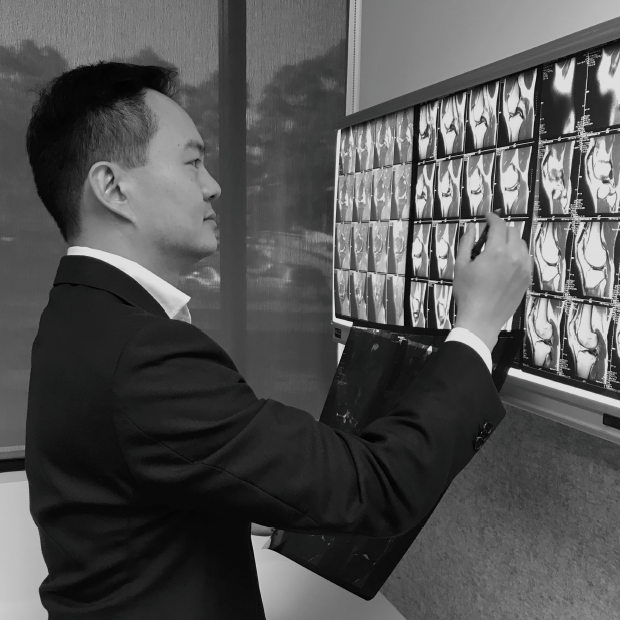Understanding Osteoarthritis of the Hip and Knee
6th August, 2025
Our hip and knee joints have a special type of cushioning called hyaline cartilage covering the moving bone surfaces. Think of this as a smooth, gliding surface that lets your joints move easily.
A fibrous joint capsule surrounds the joint, and the inner part of the joint capsule has a lining of synovium, which produces joint fluid.
The menisci in the knee and the acetabular labrum in the hip are made of fibrocartilage, another type of supportive tissue that helps stabilise the joint.
What is Osteoarthritis?
Osteoarthritis is a joint disease characterised by the loss of hyaline cartilage. Hyaline cartilage provides a smooth, low-friction surface for joint movement and is viscoelastic, helping distribute load. Our body is not able to regenerate hyaline cartilage once it is lost. As a result, there is increased stress on the underlying bone surfaces, which then undergo remodelling. The cartilage loss appears on radiographs as reduced joint space, and the bone changes appear as subchondral sclerosis, subchondral cysts and osteophytes.
How common is it?
More than two million people in Australia have osteoarthritis, and one in five over the age of 45 are affected. It is one of the most common causes of joint pain and stiffness, particularly as we age. Osteoarthritis can affect any joint and is most common in the knees, hips and hands.
What does it feel like?
Osteoarthritis can present as pain and reduced range of motion in the joint. There may be associated swelling, crepitus (a crackling or popping sound), or giving way. There may be pain and stiffness after sitting for a while, which can ease with initial movement. Functional symptoms may include limited walking distance and difficulty managing stairs, dressing, putting on socks and shoes, or getting in and out of a car. However, it is important to note that not everyone experiences symptoms the same way. Some people may have severe findings on radiographs with only mild symptoms, while others may experience significant pain with less visible structural change.
Can it be managed without surgery?
Physical activity and exercise are key components of osteoarthritis management. These can reduce pain and improve function. Even a short daily walk or gentle stretching can make a noticeable difference over time. Ideally, we should aim for at least 30 minutes of physical activity each day. Exercise programmes may be physiotherapy-led or self-directed.
Where there is excess weight, weight loss can help reduce joint pain. Other measures include analgesics, joint injections, knee braces and walking aids.
When should surgery be considered?
Joint replacement surgery may be considered when quality of life is significantly impaired by advanced arthritis. During this procedure, the arthritic joint surfaces are removed and replaced by prostheses made of metal, plastic or ceramic. The goal of surgery is to relieve pain and restore function, enabling patients to return to activities they enjoy.
 |
About the author:
Dr Horng Lii Oh is an Orthopaedic Surgeon at St Vincent's Hospital and St Vincent's Private Hospital, focused on hip and knee joint replacement, knee arthroscopic and reconstruction surgery, and orthopaedic trauma.
|